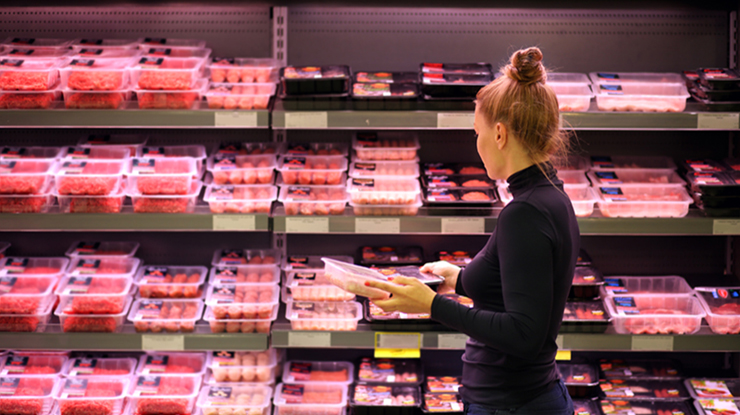 The updated Calculator is expected to create productivity and reduce waste.
The updated Calculator is expected to create productivity and reduce waste.
Packaged meat living its best shelf life
The ‘best before’ date found on red meat on the shelves comes from a complex process designed to predict freshness and safety. Behind the scenes, research is ongoing to refine its accuracy.
In collaboration with the University of Tasmania, MLA has released the latest model of the Shelf Life Calculator, which provides information for processors and suppliers to predict just how long their product will last, whether it’s going to a supermarket across town, or being shipped overseas.
Built on prior research, the updated tool extends the calculator’s use to accurately predict the shelf life of domestic retail-ready products, including overwrap, thermoformed packs, modified atmospheric packaging, and vacuum skin packs.
Research lead Dr Jay Kocharunchitt said that the latest edition of the calculator will help to inform crucial decision making and can be applied more widely throughout the industry.
“The purpose of this project was to develop a cost-effective tool for the industry – especially meat processors and exporters – to manage their meat quality in diverse cold chains,” Dr Kocharunchitt said.
The shelf life prediction tool calculates the longevity of a specific meat cut based on storage temperature, packaging type, and an estimation of microbial load at the time of packaging.
While the latest project has made the tool more widely applicable and accessible, it builds on a model that has already proved successful for various Australian processors in recent years.
The calculator offers a cost-effective approach for better and more flexible management of any given supply chain by helping to decide on product movement and quality, reducing customer complaints and waste, and increasing business profitability.
While processors, suppliers and retailers may reap the immediate benefits, more accurate predictions are an opportunity for producers too.
“When processors can better manage their supply, it creates room for more products on the market, which will increase productivity,” Dr Kocharunchitt said.
Opening opportunities
As well as domestically, high-level shelf life predictions have also been key to opening doors in international markets.
“The calculator can be used to support negotiations when it comes to international market access,” Dr Kocharunchitt said.
“A few years ago, a country in the Middle East had a shelf-life specification of 70 days for vacuum-packed lamb. We used our prediction models to prove that the product would last much longer, and the country increased the specification to 90 days.”
The increased market access from that negotiation saw an additional $100 million in returns to the Australian red meat industry.
Taking the calculator further
While the new calculator is already available for use on MLA’s website, work will continue to improve its application.
“High-value products like Wagyu aren’t yet included in the calculator. Those products behave differently in terms of shelf life, because of their high fat content, so there’s more research to be done there.”
Changing industry practices, including packaging choices, are also a factor that will be considered in future research.
“A lot of companies are moving towards recyclable packaging, and we don’t know yet how that packaging might impact shelf life.”
The Shelf Life Calculator is available as both an Excel spreadsheet and an online tool.



